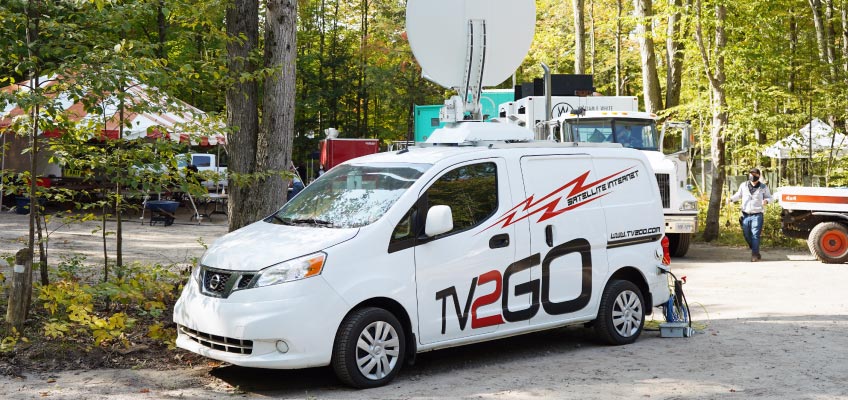Remote production workflows have become more important than ever to the success of live television broadcasts. Many live events take place in venues that don’t necessarily have permanent equipment and the cost, as well as the logistical complexity of sending production staff and equipment, is prohibitively high.
Several broadcasters have turned to video transmission companies to help them acquire the live content they need for production. TV2GO is one such company, leveraging the latest in IP technology alongside satellite links.
TV2GO offers a variety of video transmission solutions including over satellite, bonded cellular, and the internet. Each of these methods has their advantages and limitations. In this post, we will explore how TV2GO has brought together traditional and modern IP video technologies to create innovative solutions for broadcasters.
Challenges with Traditional Video Contribution
There are two main challenges associated with satellite transmissions, for both up and down links: they can be expensive for smaller productions, such as tier 2 sports, and too complex when going over longer distances requiring multiple satellite hops.
However, satellite is not without its advantages; it can be a boon in places without reliable internet service, and many seasoned broadcast professionals are more familiar with it. However, TV2GO has found a solution for their customers that allows them to enjoy the familiarity of satellite video while benefiting from the advantages of streaming over IP.
A New Hybrid Model
TV2GO addresses the challenges of their clients by utilizing a hybrid method of video transport, combining satellite and internet transport. The team at TV2GO first became interested in video transport over IP through colleagues in the industry who had a great deal of success by using Haivision’s Makito series of video encoders and the open-source SRT streaming protocol.
TV2GO combines the best of satellite and SRT by sending an IP stream via satellite. How do they do this? Using a satellite modem, the TV2GO team uplinks internet capacity to a satellite from their teleport in Toronto; a matching modem in their satellite truck (or with a flyaway antenna) will access that same connection at the remote location.
Essentially, the TV2GO team uses their satellite connection as a very long ethernet cable, creating a direct link between the remote location and the internet connection at the main teleport. The connection can be tailored to whatever upload or download speed is required for the production.
This is especially useful for international events; a Makito X4 could stream from a mountaintop ski race to any point in the world, using SRT, and with much lower latency than traditional satellite. This workflow also enables bi-direction video, for return feeds, intercom, or CCU data.
The Secure, Reliable, Future of Video Contribution
For TV2GO’s clients, this hybrid method really brings together the best of video transport over both satellite and IP – with satellite reaching to places where internet connections may not be sufficient, and IP streaming, using SRT, for reducing satellite hops across long distances and ensuring high quality video streaming and low latency.
Lawrence Partington, Chief Innovation Officer at TV2GO, noted how their clients were thrilled with the cost savings that video streaming with SRT provided, as well as how it streamlined operations – setting up an IP connection is much more straightforward than coordinating a satellite connection. Along with these advantages, using Haivision’s Makito video encoders and decoders to send and receive video content over the open-source SRT streaming protocol ensured that it remained low latency, and high quality, noting how one of their big live events had “not a single pixel drop.”
This hybrid solution has also offered another opportunity to TV2GO’s clients who are accustomed to satellite transport – to dip their toes into video streaming, and explore their options moving forward. But most importantly, by combining the best of satellite and video streaming, TV2GO is showing that broadcasters don’t need to compromise between cost and quality.
Learn more about Haivision’s video streaming solutions for contribution and live events.
Haivision's Remote Broadcast Solutions
Learn more about Haivision’s remote solutions for broadcast, including remote production, at-home workflows, and live interviews.

